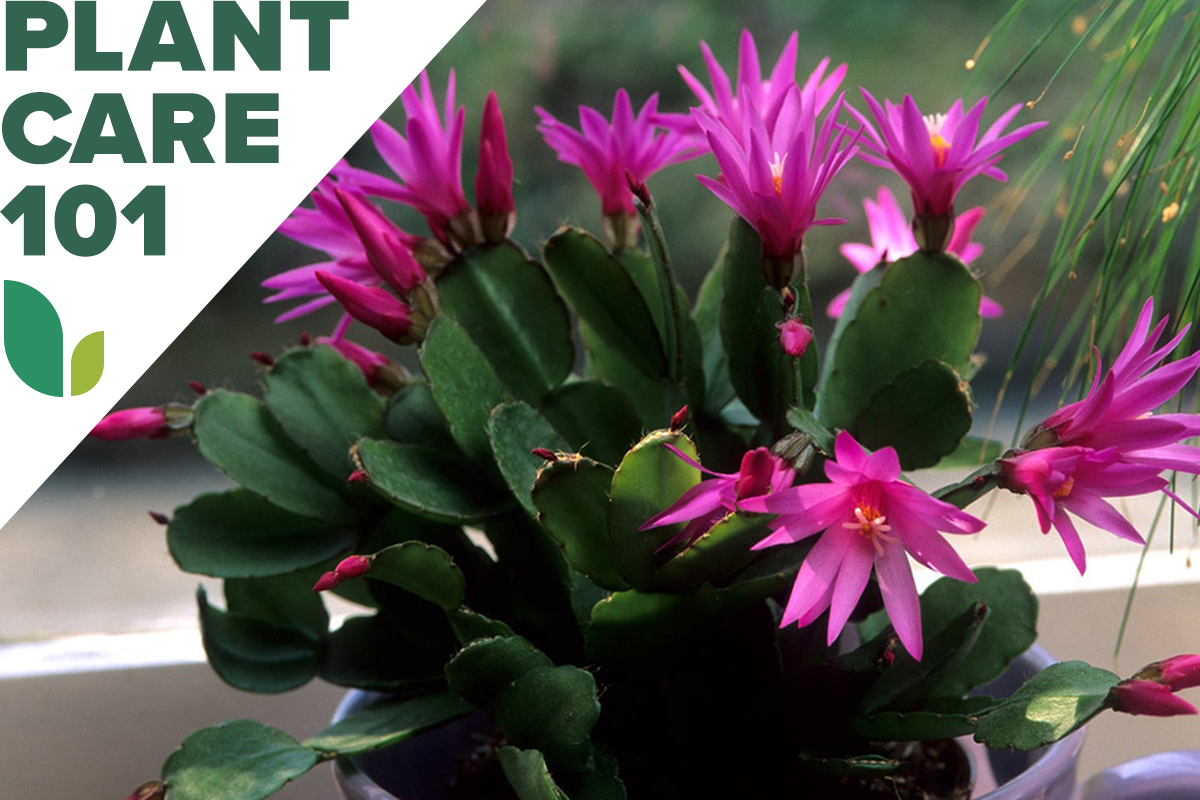

We may earn revenue from the products available on this page and participate in affiliate programs. Learn More ›
The waxy, colorful blooms of the Easter cactus appear in local garden centers and grocery stores in March and April, producing an abundance of red or pink, starlike flowers that can last well into May or longer. But once the flowers fade, Easter cacti don’t need to end up on the curb. Relatively low-maintenance succulents, they actually make one of the best houseplants.
Sporting deep emerald-color leaves with an arching growth pattern, Easter cactus looks great in hanging baskets or high on a shelf. Even better, getting an Easter cactus blooming again is fairly easy each year. Follow this guide to help with Easter cactus care and ensure your plant will thrive, and bloom again, for years to come.
RELATED: Beyond Poinsettias: 23 Houseplants That Bloom in Winter
Easter Cactus Care at a Glance
Common Name: Easter cactus, spring cactus
Scientific Name: Schlumbergera gaertneri
Soil: Fast-draining
Light: Bright, indirect
Water: Consistent
Food: During active growth and bloom
Temperature and Humidity: 65 to 80 degrees Fahrenheit; 50 percent humidity or higher
Propagation: Cuttings
Safety: Nontoxic
Easter Cactus Characteristics
The Easter cactus, Schlumbergera gaertneri (also sometimes called Rhipsalidopsis gaertneri or Hatiora gaertneri, is native to the cool rainforests of Brazil. An epiphyte, the Easter cactus gets most of its moisture in the air, rather than directly from the soil. Epiphytes are tree-dwelling plants, so they have shallow root systems. This is important to remember when thinking of Easter cactus care, since the secret to the plant’s success is careful watering and plenty of humidity. With its shallow root system, it only needs repotting when the plant is nearly cracking the pot in which it’s growing.
The Easter cactus belongs to the same genus as its cousins, the Christmas cactus and Thanksgiving cactus. Unlike the other two holiday cactus varieties, the Easter cactus blooms later in the spring. Growers time the flowers to appear in March or April, typically around Easter, thus its common name.
Apart from the time of year these plants bloom, an easy way to tell between Christmas cactus vs. Easter cactus—as well as Thanksgiving vs. Easter cactus—is by looking at the stems. The branch stems, or cladophylls, of the Easter cactus have the most rounded leaves of the three. Thanksgiving cactus, meanwhile, has pointed claw-like edges and Christmas cactus can look quite similar, but with teardrop-like stem edges. Easter cactus flowers, typically red or pink, are also more pointed and star-like than their cousins.
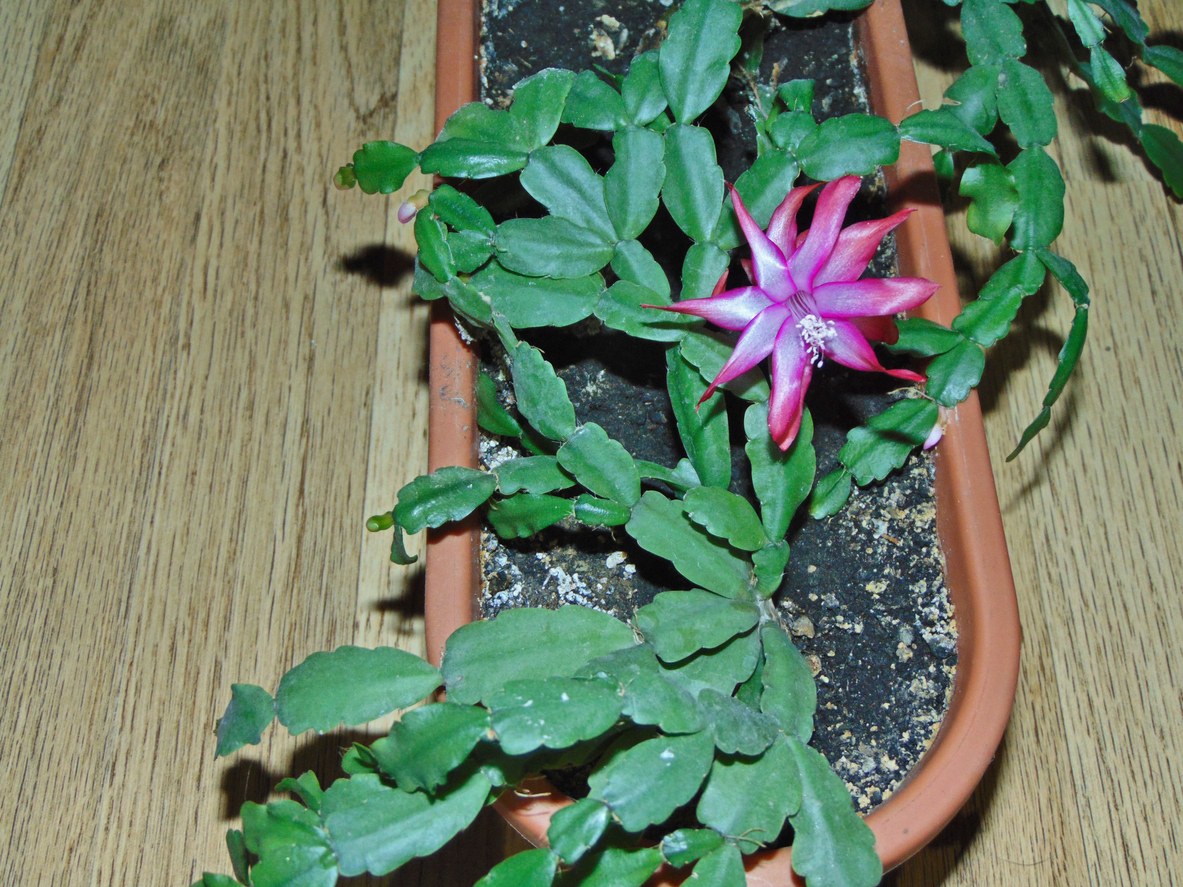
Selecting Soil for Easter Cacti
Not only do Easter cacti have shallow roots, they are also considered succulents, which means a fast-draining soil mix is a must to prevent roots from sitting in water. Opt for a well-balanced and porous potting mix that includes perlite, coarse sand, some peat moss, and nutrient-dense organic mulch. According to the University of Arizona Cooperative Extension, one way to achieve the right balance is to use about 60 to 80 percent commercial potting soil with 20 to 40 percent added perlite.
RELATED: The Best Soils for Succulents
The Right Light
Like many houseplants, Easter cactus prefers bright, indirect light. Indoors, this usually comes from a north- or east-facing window. Outside, aim to keep Easter cacti in bright shade, such as a spot that gets some shade from a tree. Easter cacti leaves that are overexposed to light will develop a red, purple, or even pale green color.
In order to rebloom, however, Easter cacti require a period of light deprivation for 2 to 3 months, with a minimum of 13 hours of darkness per 24-hour period. For many homes, this is easily achieved by keeping the plant out of the light of a window or in a seldom-used room that remains dark at night.
Watering Easter Cactus
An overwatered Easter cactus is an unhappy one, so consistent watering is critical to keep these plants healthy. Aim to water when the top 1 to 2 inches of the soil feel dry to the touch. Don’t let them dry out so much that the soil begins to pull away from the pot; this causes soil compaction and results in a potting mix that won’t drain quickly.
During their active growth and blooming stage, expect to water a 6-inch Easter cactus once every 3 days or so, but keep in mind this can vary greatly depending on the humidity, the size of the plant, and the size of the pot. Always be sure that the water drains completely and that the pot is not sitting in water.
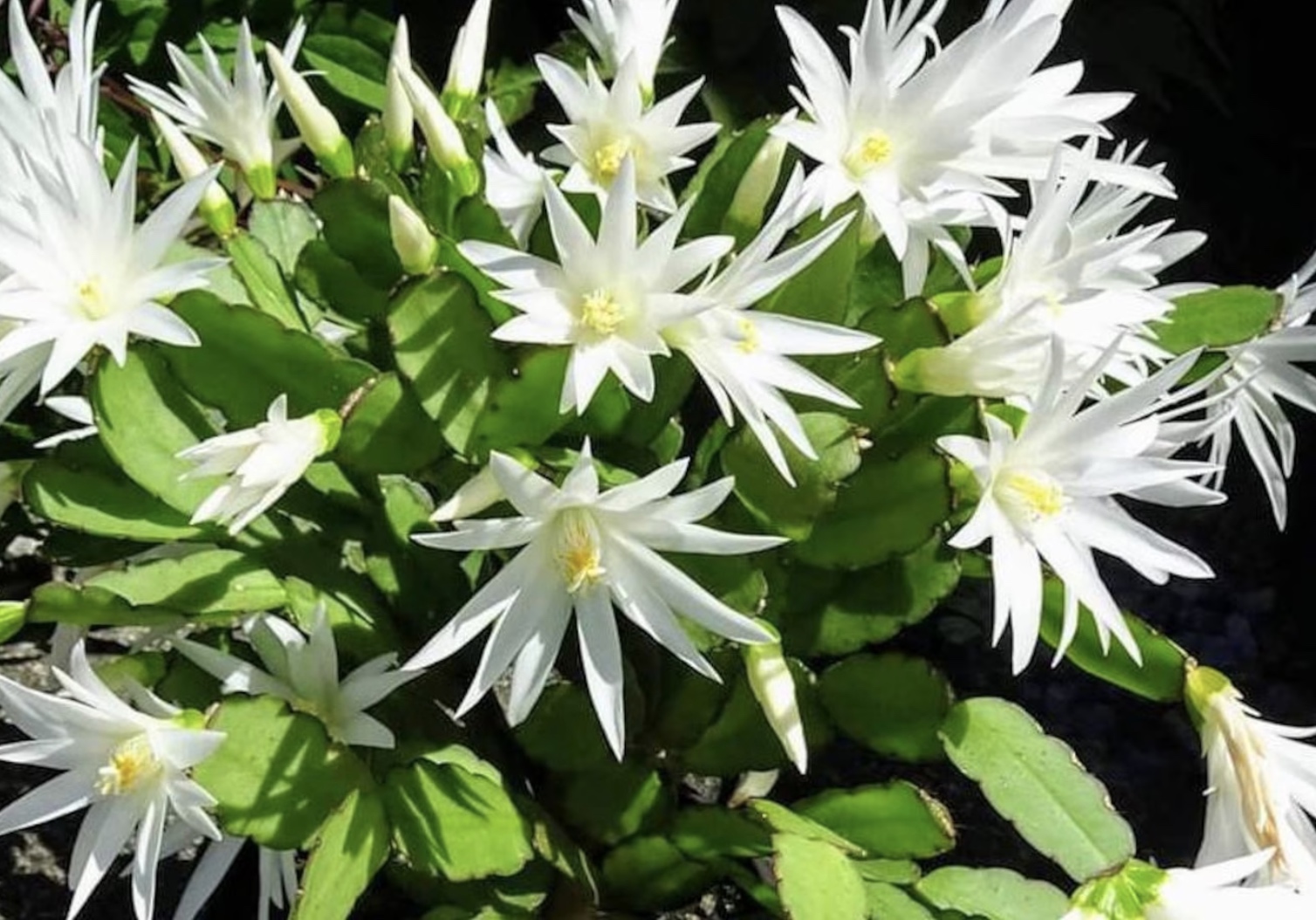
Fertilizing Easter Cactus
Like many succulents, Easter cacti should be fertilized sparingly, about once a month, with a balanced water-soluble fertilizer (15-15-15). Easter cactus fertilizer should be diluted, so don’t use the same ratio needed for regular houseplants. Stop fertilizing after the plant’s blooms have fallen, allowing it a period of rest. Take care not to apply liquid fertilizer to a dry plant; water it and allow it to drain first, then apply the fertilizer.
RELATED: Master Goldfish Plant Care for ‘Schools’ of Bright Blooms Year After Year
Setting the Temperature and Humidity
Easter cacti are native to a tropical climate, so warm temperatures and plenty of humidity are keys to encouraging healthy growth. The average home is not humid enough for this plant, especially in the winter, so plant owners can increase humidity either by placing a humidifier in the area or by misting the plant regularly (every day to every other day). Another trick to increase the humidity is to set the pot on a shallow tray or saucer filled with pebbles, and then add water. The pebbles will keep the pot out of the water, helping to avoid oversaturation or overwatering of the Easter cactus.
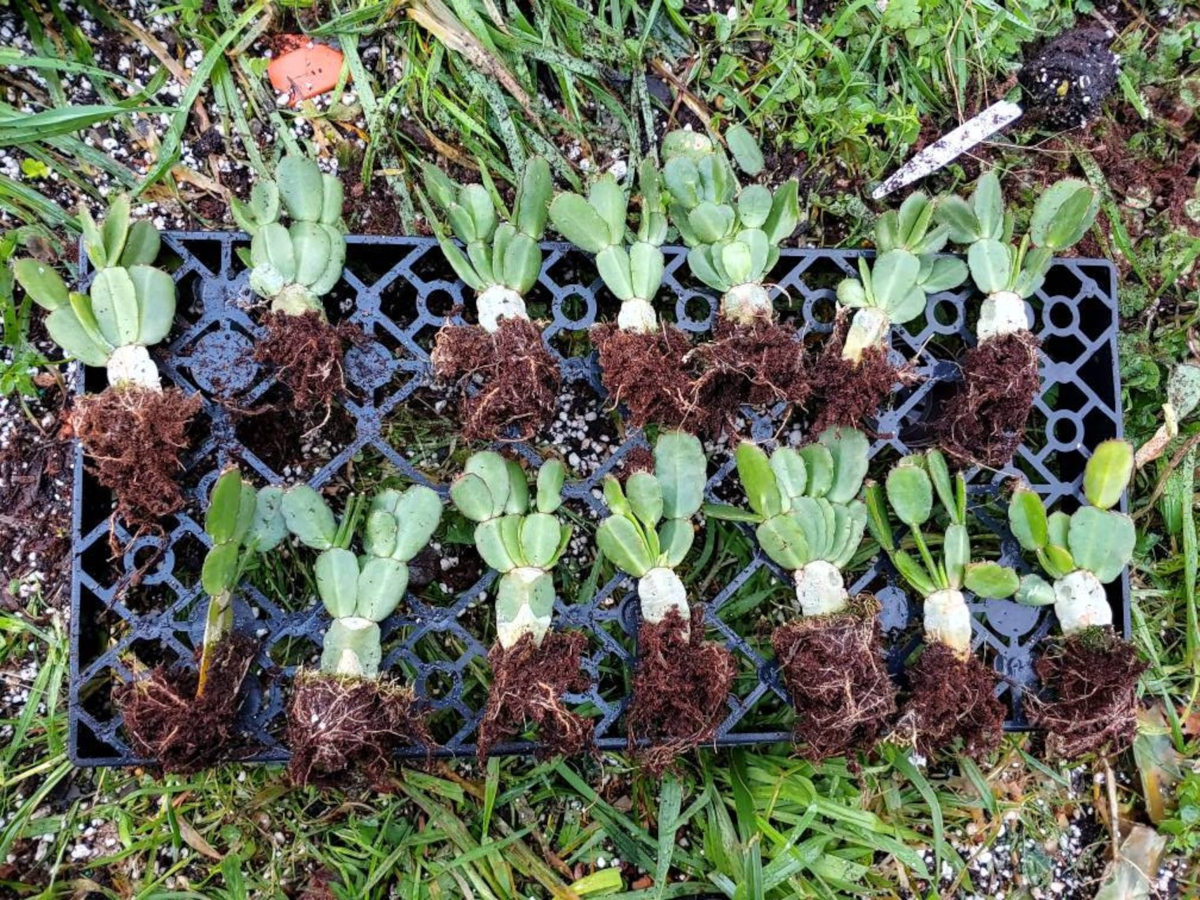
Propagating Easter Cacti
Learning how to propagate Easter cactus for more plants is fairly straightforward. Easter cacti are best propagated using cuttings taken when pruning after spring bloom. Just follow these steps:
- Cut off a section of leaves with at least three segments.
- Rest the cutting to let it callus (2 to 3 days).
- Plant in a small pot (4-inch pots are usually the right size for cuttings) in a sterile, fast-draining potting mix specifically for succulents.
- Allow the soil to dry out completely between waterings.
How to Get Easter Cactus to Bloom
Like the Christmas cactus and Thanksgiving cactus, it helps to know how to get the Easter cactus to bloom each spring. The plant must go through a period of light and temperature change to bloom again. Like its holiday cactus cousins, the plant needs at least 8 weeks of nighttime light deprivation, and Easter cactus might bloom better with up to 12 weeks (or 3 months) of short days. This is easier to achieve than it sounds.
To coax out blooms around Easter, count back 12 weeks from the date you want to see the flower buds, between December and January, and begin to shift the plant’s light exposure. During this period of light deprivation, do not fertilize the plants and be careful not to overwater.
To adjust light and temperature:
- Keep the Easter cactus in an area (outside) with overnight temperatures between 50 and 55 degrees Fahrenheit. In all but the most moderate climates, this will be difficult in late winter, when temperatures can plummet.
- Inside, the average home temperature should fall between 55 and 70 degrees. Deprive the plant of light for 14 to 16 hours in a 24-hour period under these conditions. This can be achieved by placing it in a closet, seldom-used room, or other low-light area of the home.
- If an Easter cactus is kept in temperatures at or higher than 70 degrees, deprive it of even more light. Ideally, allow it 15 hours of constant darkness.
Once the plant begins to set buds, choose an area in the home with consistently bright, indirect light. Keep the Easter cactus blooming by avoiding moving the plant once the buds have formed, since this can cause the hard-earned blooms to drop.
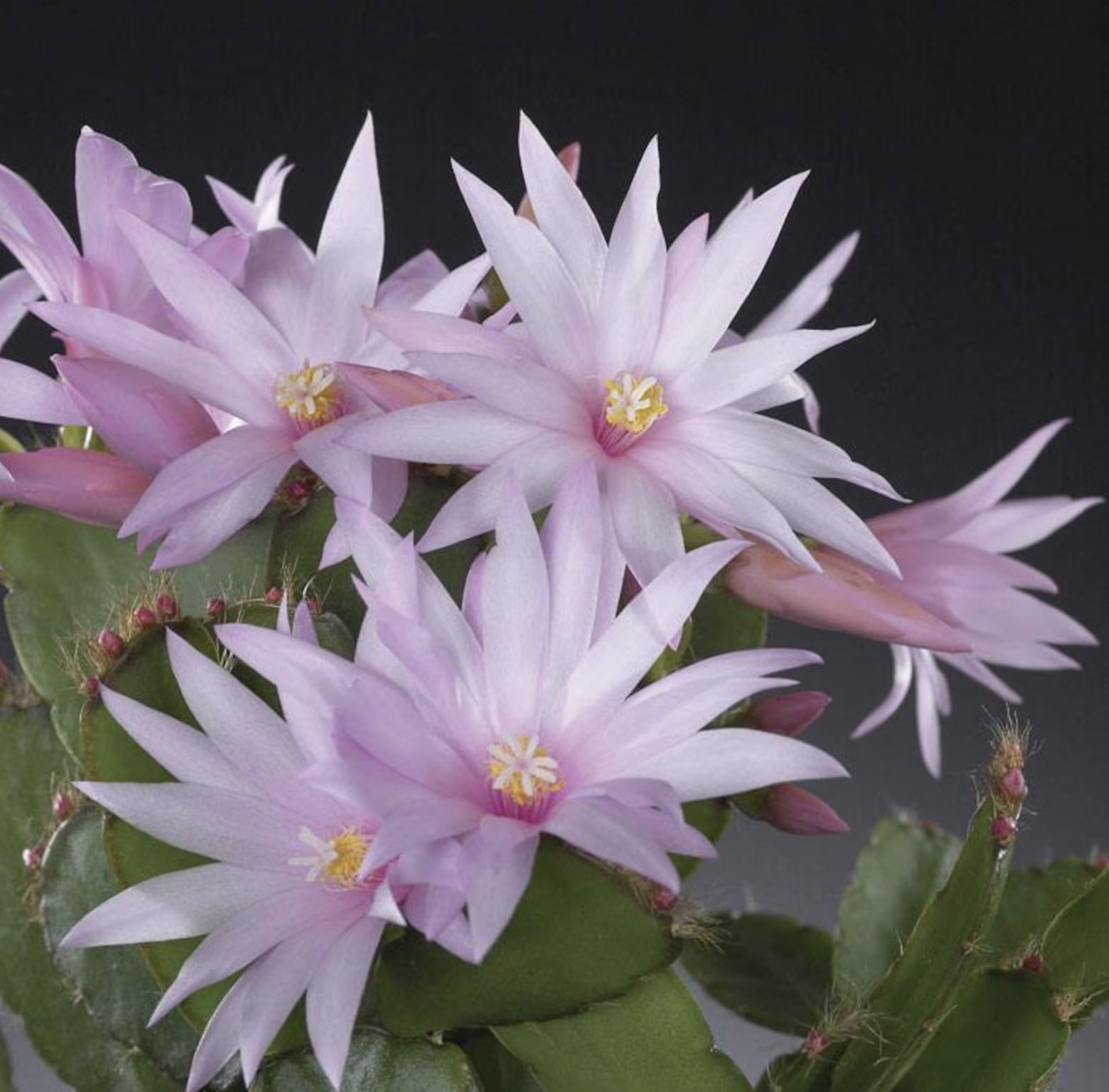
Safety Considerations
All members of the Schlumbergera genus, including the Easter cactus, are safe for humans. They are also nontoxic to cats, dogs and horses, as designated by the ASPCA. However, it’s always a good idea to use caution around pets and people when fertilizing or spraying for pests. Additionally, glove and eye protection are recommended while applying pesticides or insecticides, even homemade ones.
Potential Pests and Diseases
One of the biggest issues Easter cacti face is overwatering by well-meaning plant owners. Too much water will cause the usually lush green leaves to pale. It will also encourage fungus gnats, mealybugs, aphids, and other common houseplant pests. Additionally, there are a number of fungal and viral diseases to which the members of the Schlumbergera group are susceptible. According to Penn State University, these include botrytis blight, basal stem rot, Impatiens necrotic spot virus, pythium root rot, and phytophthora root rot.
RELATED: 13 Types of Cactus Plants You Can Grow at Home
FAQ About Easter Cactus Care
The spring-flowering cactus is popular for a reason: long-lasting blooms and overall relatively low-maintenance plant care. Still, there are always some common Easter cactus problems and questions. Here are a few of the most frequently asked, along with the answers.
Like its other holiday cactus cousins, the Easter cactus can live for 10 years or more. If cared for properly, they can live substantially longer, lasting for generations.
The most likely cause of limp leaves on an Easter cactus is overwatering. Stop watering the plant and allow the soil to dry out completely, then water sparingly (once a week) until the plant recovers. Easter cactus leaves can also go limp if exposed to cold temperatures, 50 degrees Fahrenheit or lower.
To ensure plenty of bright, indirect light, place the Easter cactus near a north-facing or east-facing window.
Easter cacti prefer bright, indirect sunlight, however some morning sunlight in the winter months, when the sun is not as harsh, can be okay.
